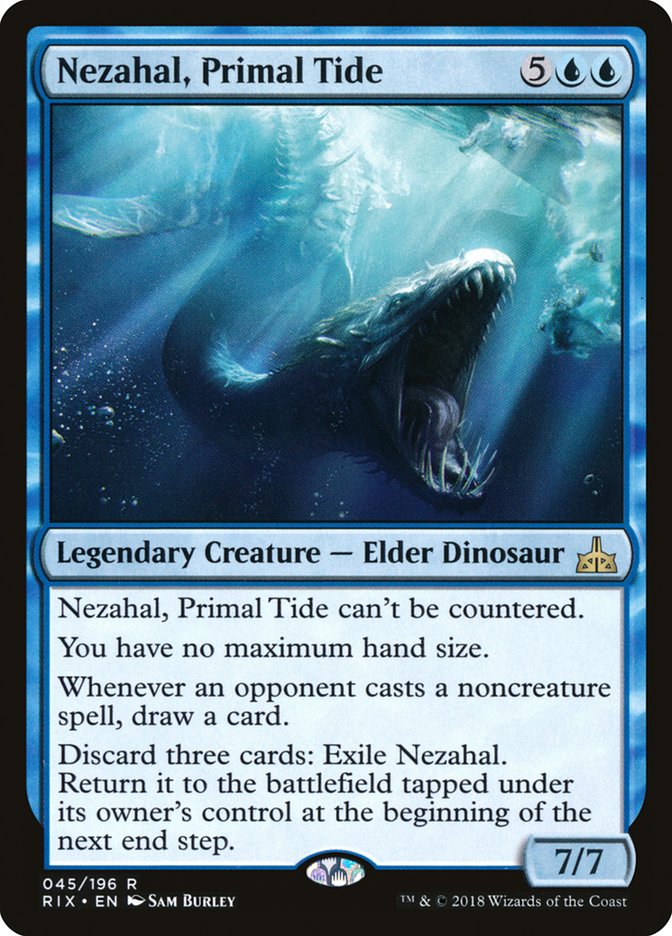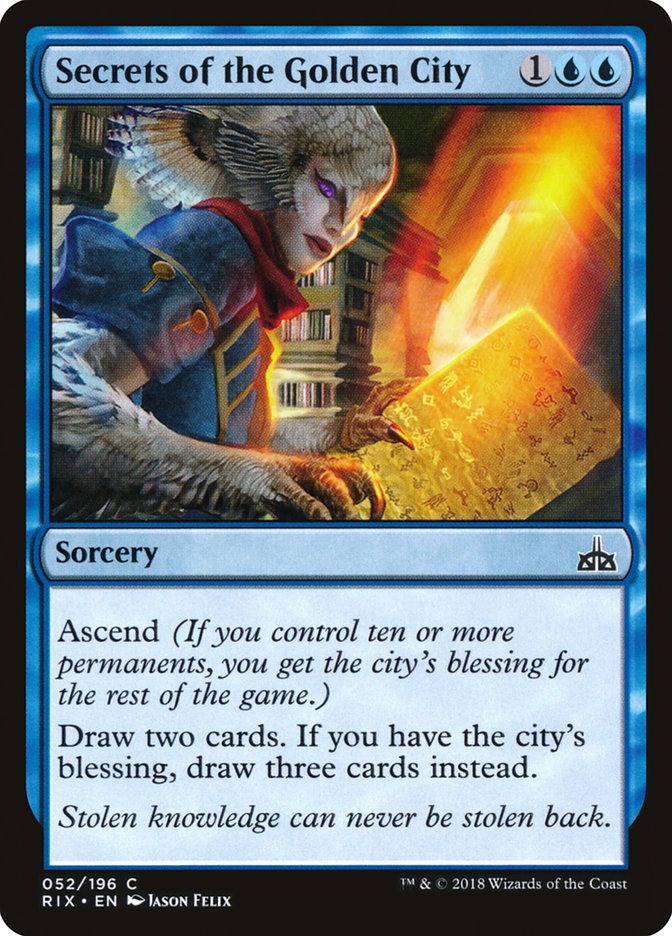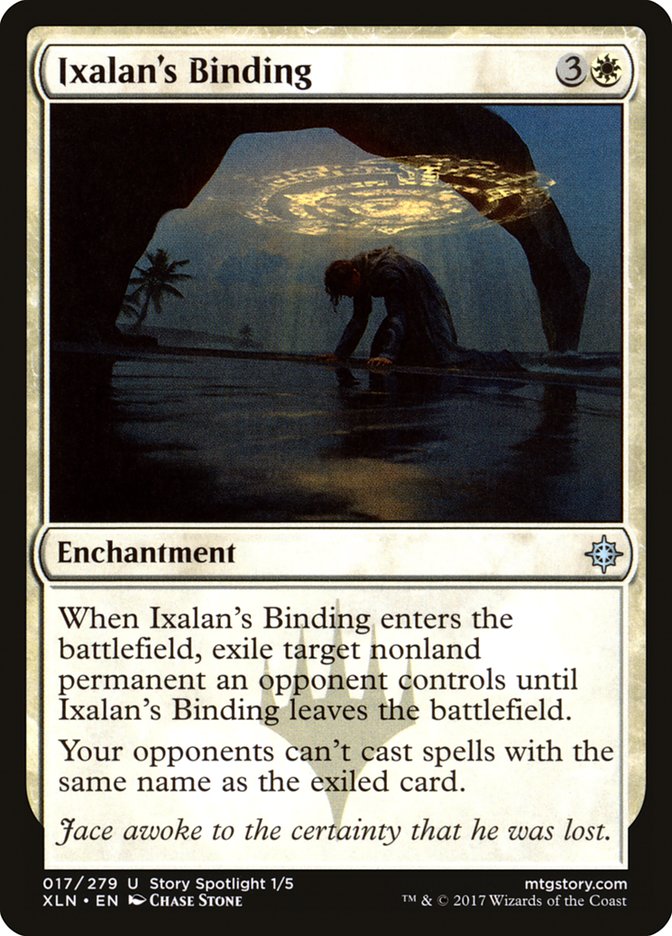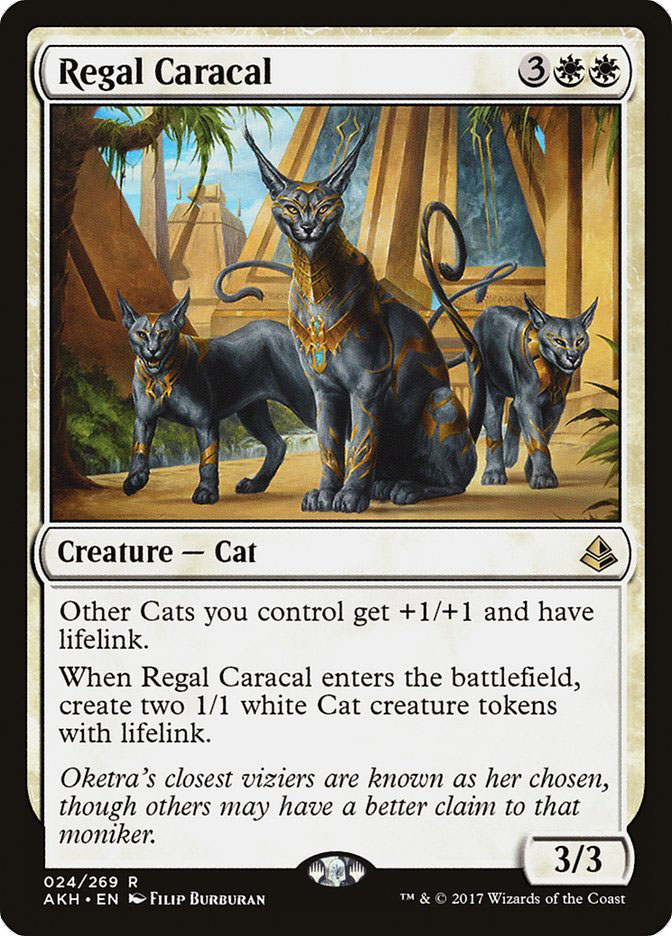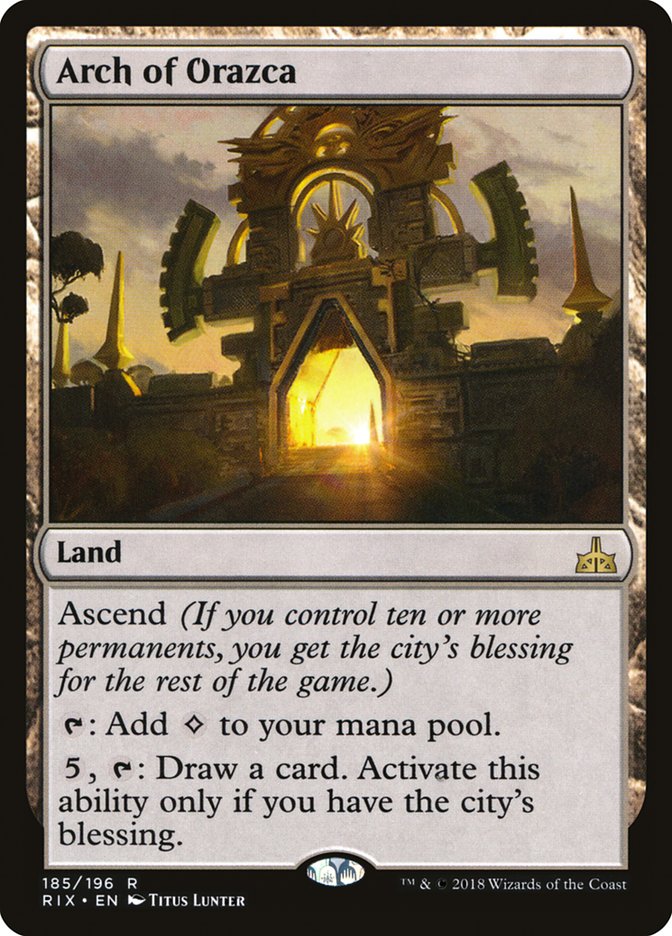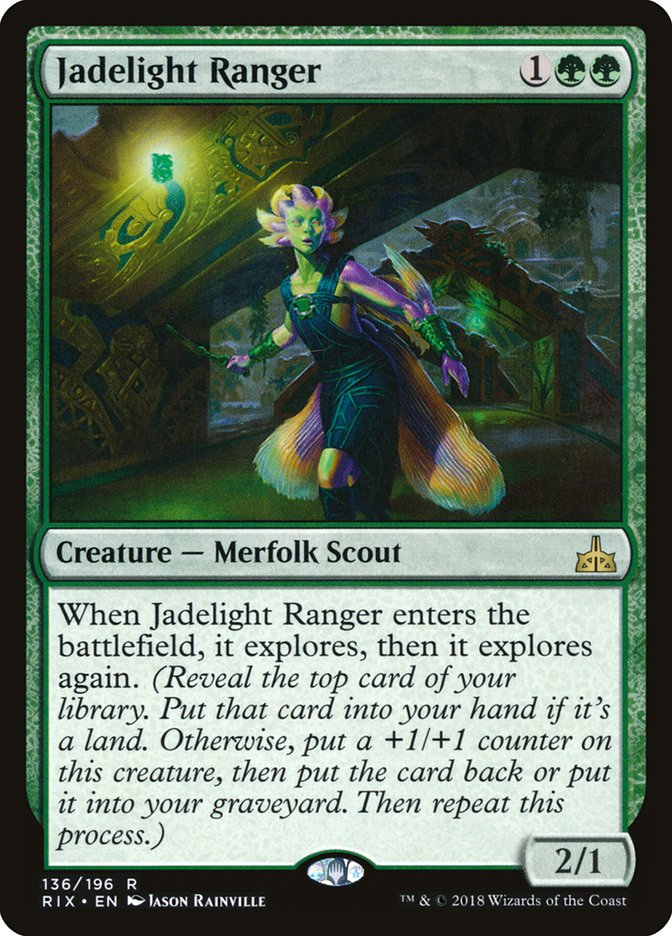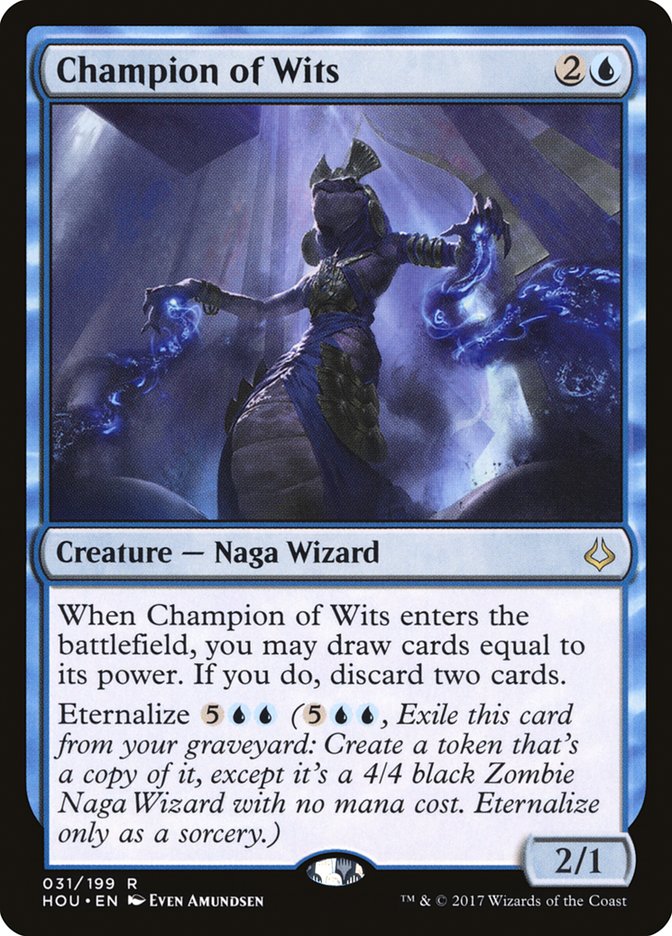Week two of Standard is in the books and the metagame is slowly starting to
take shape.
I’m still immersed in Modern getting ready for Pro Tour Rivals of Ixalan, but Standard is at its most interesting right
now,and I’ve been pleased with the diversity and potential for new
archetypes, which means there’s a bunch to talk about.
There’s been all sorts of different archetypes popping up, and pretty much
anything goes right now. Aggro has had a solid showing and
Ari talked about that on Monday,
so today I’m going to take a peek into Standard focusing on the combo and
control decks coming out of #SCGPHILLY and
on Magic Online that I feel are poised to shine going forward.
Creatures (18)
- 1 Torrential Gearhulk
- 4 Whirler Virtuoso
- 4 Glint-Sleeve Siphoner
- 3 Glorybringer
- 2 The Scarab God
- 4 Rekindling Phoenix
Planeswalkers (2)
Lands (25)
Spells (15)

Creatures (15)
- 1 Gonti, Lord of Luxury
- 2 Torrential Gearhulk
- 4 Whirler Virtuoso
- 4 Glint-Sleeve Siphoner
- 2 Glorybringer
- 2 The Scarab God
Planeswalkers (2)
Lands (26)
Spells (17)

I think it’s safe to say that Grixis Energy has proven itself and is the
deck to beat right now. It’s the most played deck and for good reason. It’s
a hybrid between midrange and control, packed full of card advantage and
power, with great sideboard options full of flexibility. It also has access
to a veritable smorgasbord of premium removal at all points of your curve.
Every card in Grixis Energy that isn’t just straight up efficient
one-for-one removal is potentially a two-for-one, if not more. Most of your
cards draw more cards, make multiple creatures, or come attached with a
removal spell. The deck is happy just keeping parity until your opponent
runs out things to do, since it has solid answers and can then start
deploying hard to deal with threats that generate an advantage.
Glorybringer and The Scarab God are a filthy tag team of card advantage,
and that’s even before you start reanimating Glorybringer with The Scarab
God.
I think you’ll be hard pressed to find too many matchups that destroy it
after sideboard, but some control and combo decks should at least have an
excellent game 1 against it.
Creatures (5)
Lands (25)
Spells (30)

So why play Grixis Control over Grixis Energy?
The big benefit to running a control deck right now is that there is so
much removal in every deck you can mostly just dodge it all game 1 and cast
Glimmer of Genius a million times instead.
After sideboard the decks should start looking more alike, as control can
side in threats like Whirler Virtuoso, Chandra, Torch of Defiance, and
sometimes even Glint-Sleeve Siphoner, but Grixis Energy will get rid of
most of its removal and be packed full of more value creatures.
Creatures (1)
Lands (25)
Spells (34)

Going even further down the road of giving your opponent no targets for
removal is U/W Approach. I love me a good creatureless win condition.
U/W Approach completely dodging removal should give it a solid game 1
matchup against pretty much every deck in the format, the tradeoff being it
doesn’t have access to the powerful creatures in the format and will start
to struggle against Duress and Negate after sideboard.
There are some ways to combat that problem though and one of the new ones
is Nezahal, Primal Tide. You can’t use The Scarab God on what you can’t
kill, and Nezahal, Primal Tide is incredibly difficult to kill. Nezahal may
look a little vanilla but is surprisingly annoying to play against and can
draw cards while threatening to end the game with a fast clock.
Creatures (10)
Lands (26)
Spells (24)

There are a bunch of funky different things going on with this list, but
the first one that caught my eye (after Sailor of Means of course) was
Secrets of the Golden City.
Drawing three cards for three mana is excellent, and its default Divination
mode isn’t terrible either. The key to the city’s blessing is that it’s
pretty easy to get for the deck. Regal Caracal, Legion’s Landing, and
Sailor of Means all allow you to get multiple permanents for one card to
get up to the city’s blessing earlier, and your removal even helps, in
Baffling End and Ixalan’s Binding.
Ixalan’s Binding is really exciting to me right now as well since there are
very few ways to remove it, especially maindeck. If Hazoret the Fervent or
The Scarab God are giving you trouble, then Ixalan’s Binding is exactly the
card for you.
Ixalan’s Binding kind of acts as a win condition through attrition by
removing your opponent’s best threats, since it allows you to essentially
add on a free Cranial Extraction to whatever it is you’re Binding, and once
you have a couple of your opponent’s best threats gone, it begins to add up
over the course of a long game as they start drawing uncastable copies.
Regal Caracal is one of the cards happiest to see its natural predator of
Rampaging Ferocidon sent on a permanent vacation to Belize. The Cat came
back with a vengeance to deal with annoying red decks very well now.
Arch of Orazca is a card that looks great in the deck as well, perfect for
an attrition battle. It has a low opportunity cost and can be make or break
in a long drawn out game.
Is Sailor of Means really a card we want to be playing, though? I’m
skeptical but willing to have an open mind. It blocks and ramps in a pinch,
but compared to something like Servant of the Conduit it comes out looking
less than squeaky clean. I’m sure the card means well, but probably doesn’t
quite cut it.
Creatures (14)
Lands (23)
Spells (23)

Why is no one playing this deck? I’m surprised because U/W Gift should be
really good right now. U/W Gift is happy with all the recent new bans,
especially Rampaging Ferocidon, since that was a commonly played card you
never wanted to see.
Same idea goes that Regal Caracal looks a lot more appealing nowadays and
can act as additional copies of Angel of Sanctions, obviously worse to
return with God-Pharaoh’s Gift, but not bad by any stretch of the
imagination. Rampaging Ferocidon was the main way for aggro decks to beat
you when you had to play a fair game that didn’t involve Refurbishing a
quick God-Pharaoh’s Gift. Now you can just win the fair way a lot more
often.
If you’re looking to God-Pharaoh’s Gift while exploring something a little
more adventurous, there are other options as well…
Creatures (29)
- 3 Angel of Invention
- 4 Walking Ballista
- 2 The Scarab God
- 4 Champion of Wits
- 2 Hostage Taker
- 4 Merfolk Branchwalker
- 4 Seekers' Squire
- 4 Jadelight Ranger
- 2 Ravenous Chupacabra
Lands (22)
Spells (9)
Sideboard

This deck might look strange enough to bug you, but I think it’s actually
kind of amazing and could easily be the next evolution of God-Pharaoh’s
Gift decks.
You’re essentially “splashing” for Merfolk Branchwalker and Jadelight
Ranger, which are just better Seekers’ Squires. How can that be right? Well
when you think about what your deck is trying to do, they really do
favorable things for you very often, especially when you have so many in
the deck.
The key being it’s so good to fill your graveyard with creatures and dig
towards Gate to the Afterlife, that’s really all you want to do.
Some likely explore scenarios for Jadelight Ranger when you cast it are
that it can draw you two lands (amazing); draw you a land, mill a creature,
and be a 3/2 (amazing); or mill two creatures and be a 4/3 (amazing). Of
course you can keep anything you want on top your library rather than
putting it to the graveyard, especially a Gate to the Afterlife. Every card
just churns through your deck so hard now, finding and activating Gate to
the Afterlife seems like it would be a breeze.
Jadelight Ranger actually starts to look as good as Champion of Wits, which
is basically the most powerful card for making the deck run smooth and,
quite frankly, be able to function at all. Even if Jadelight Ranger isn’t
quite on Champion of Wits’ level, you pretty much hit a critical mass of
creatures that put more creatures to the graveyard and enable a fast Gate
to the Afterlife activation.
Checking out these decks has me excited to try some Standard. I expect
control and combo decks to have some breakout performances soon, but for
now I’m off to play a little Modern first.




